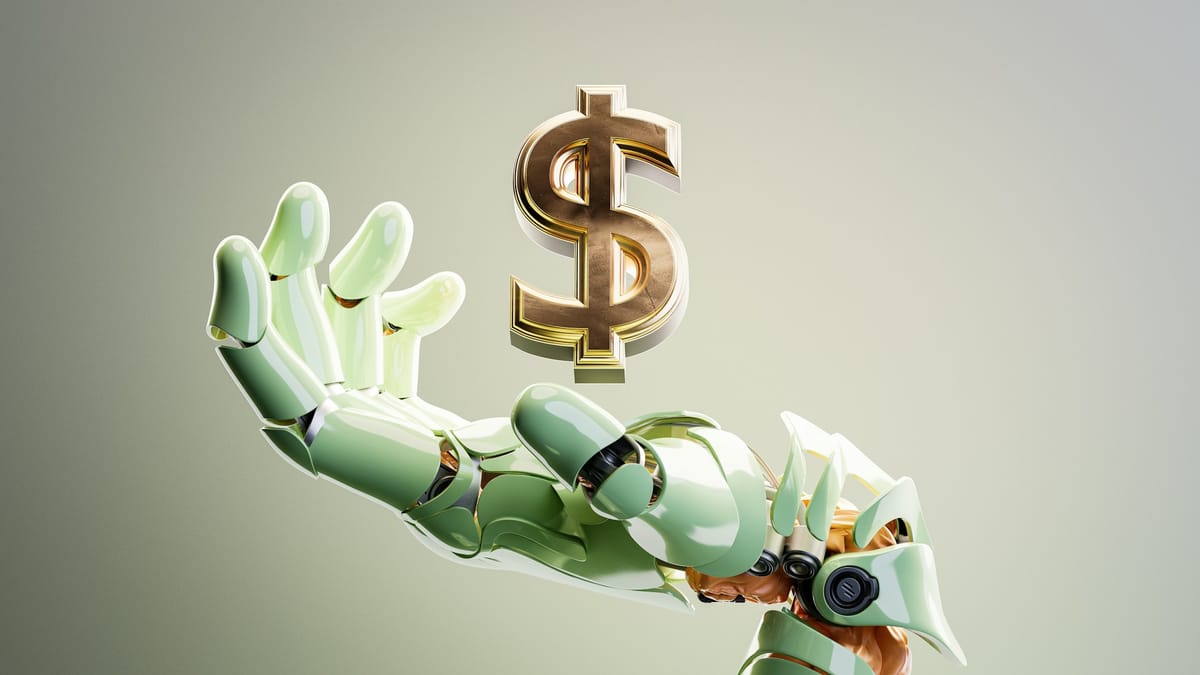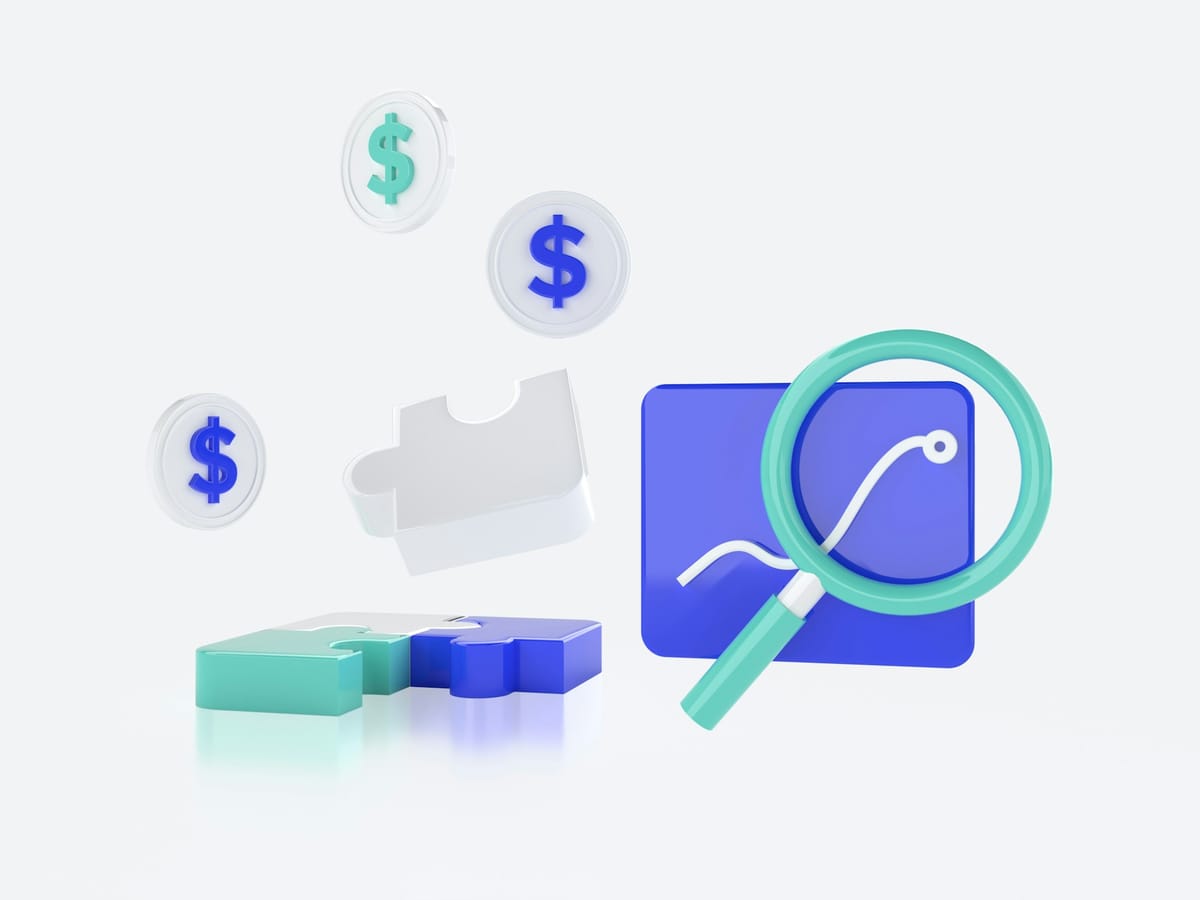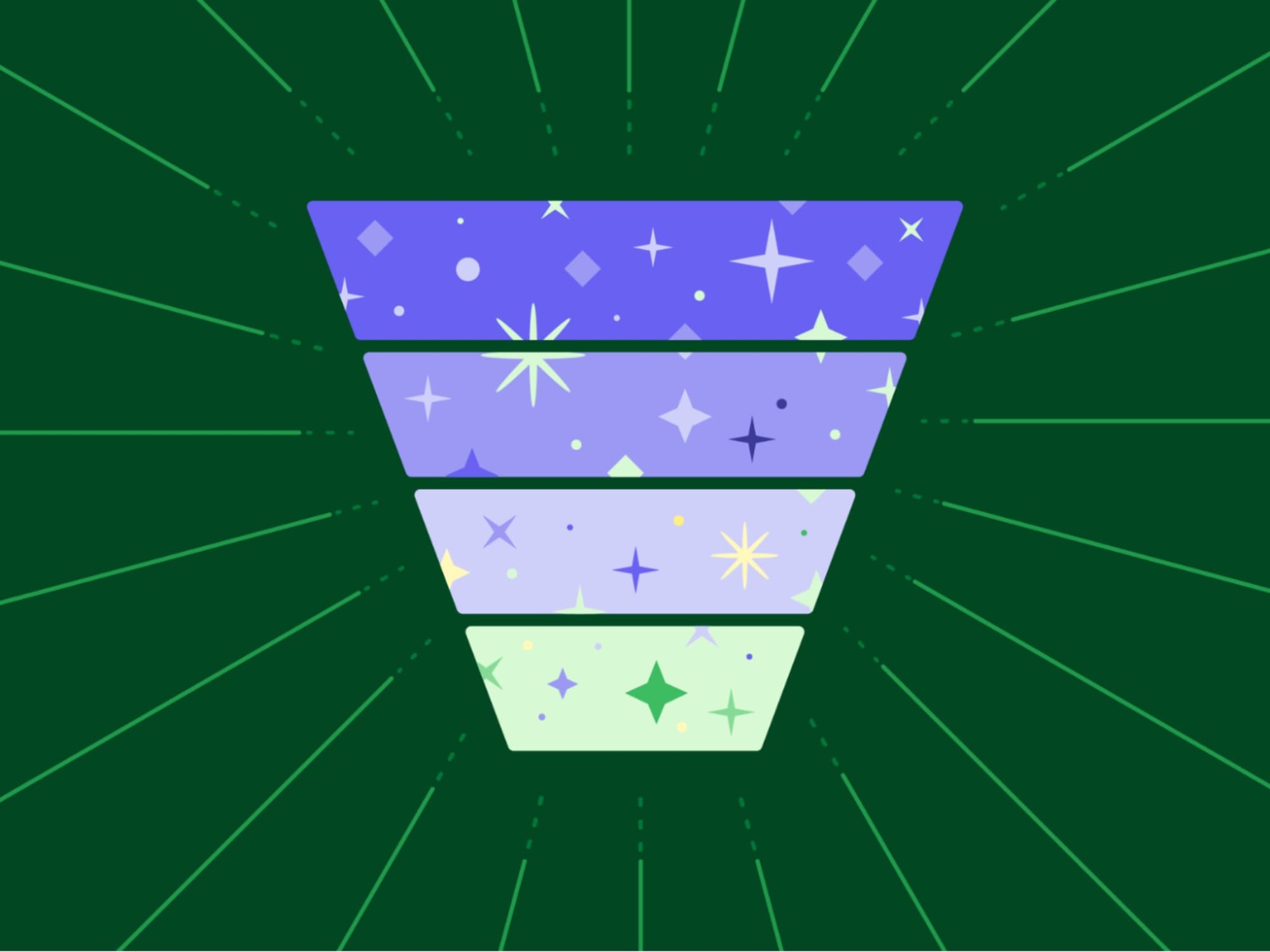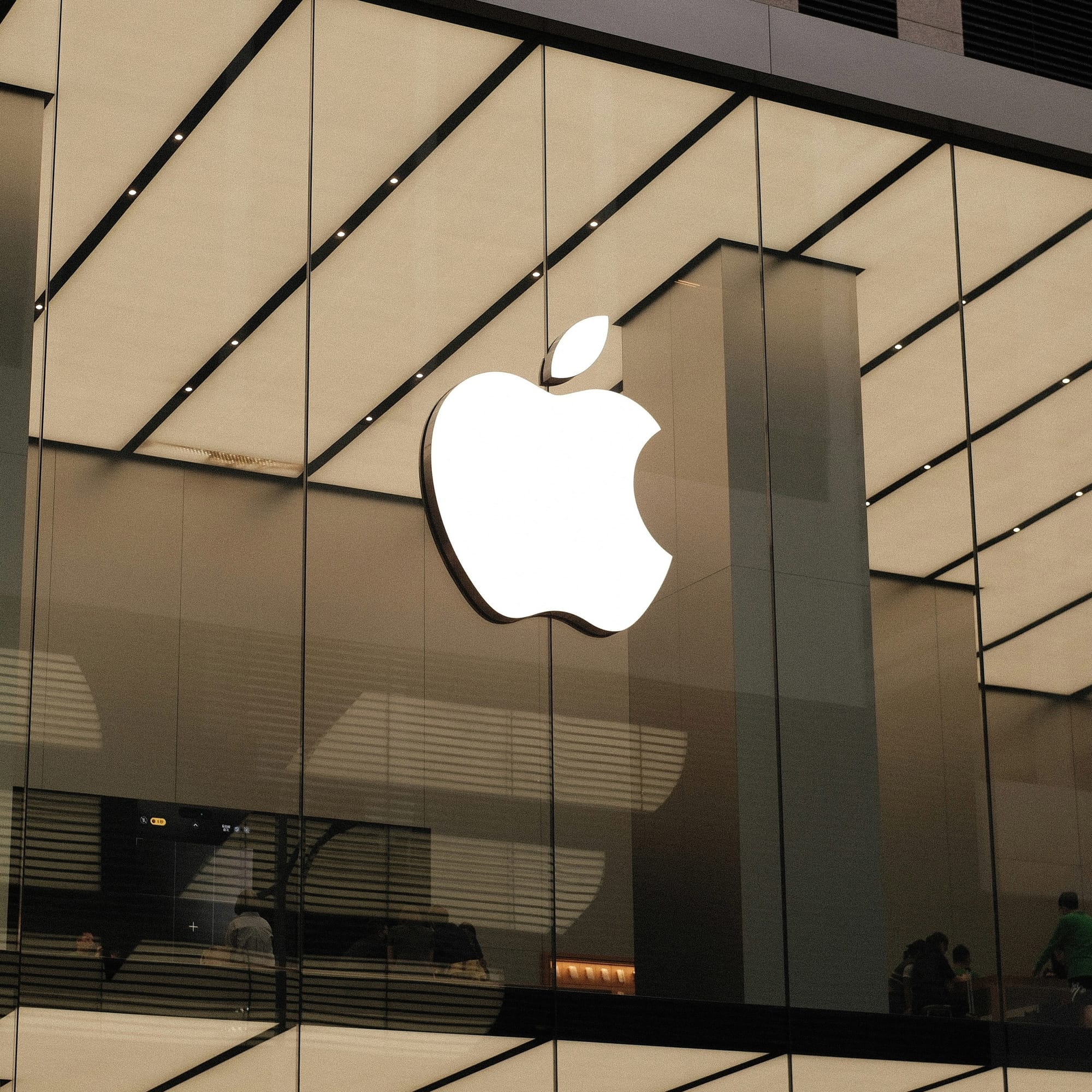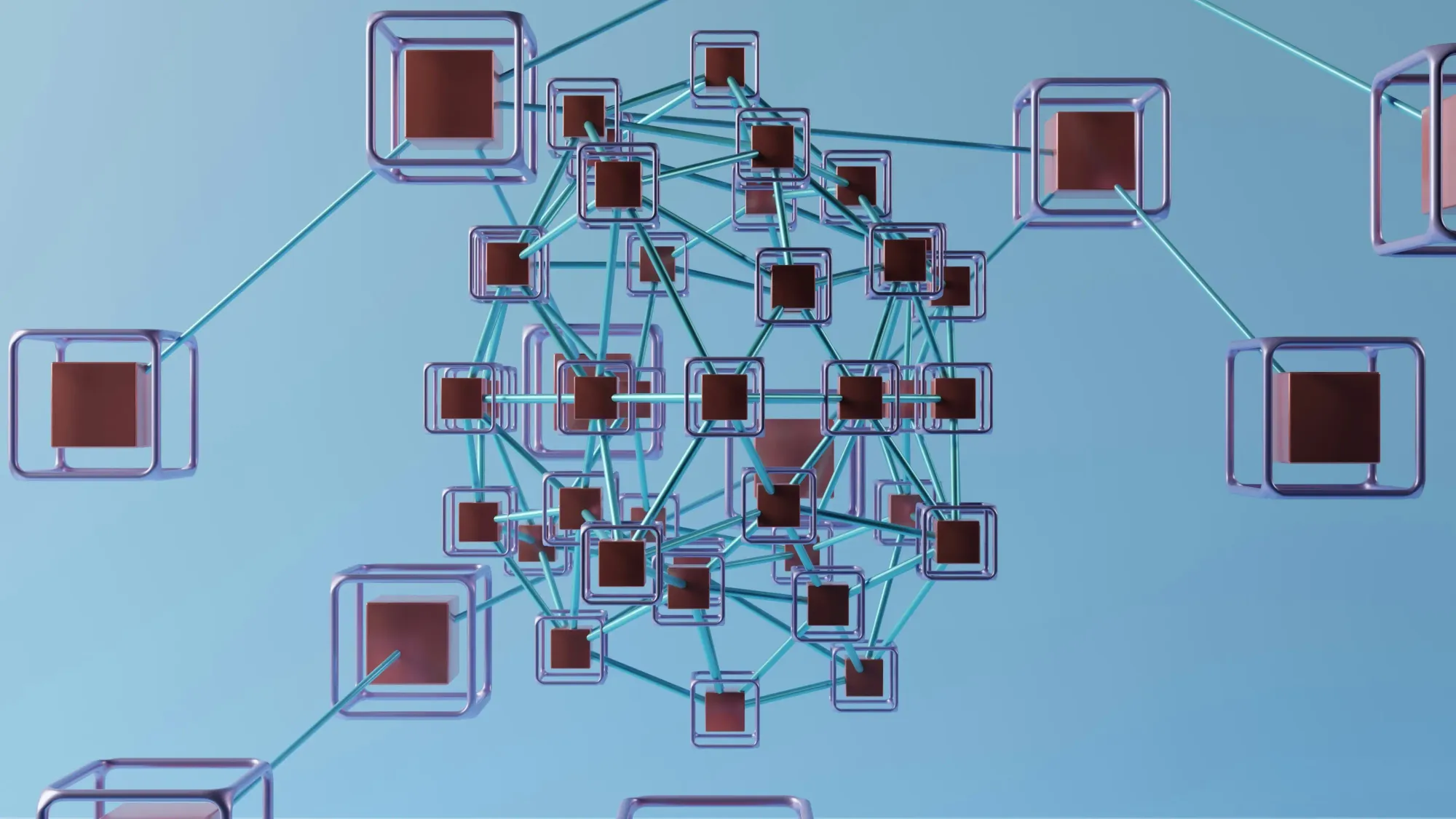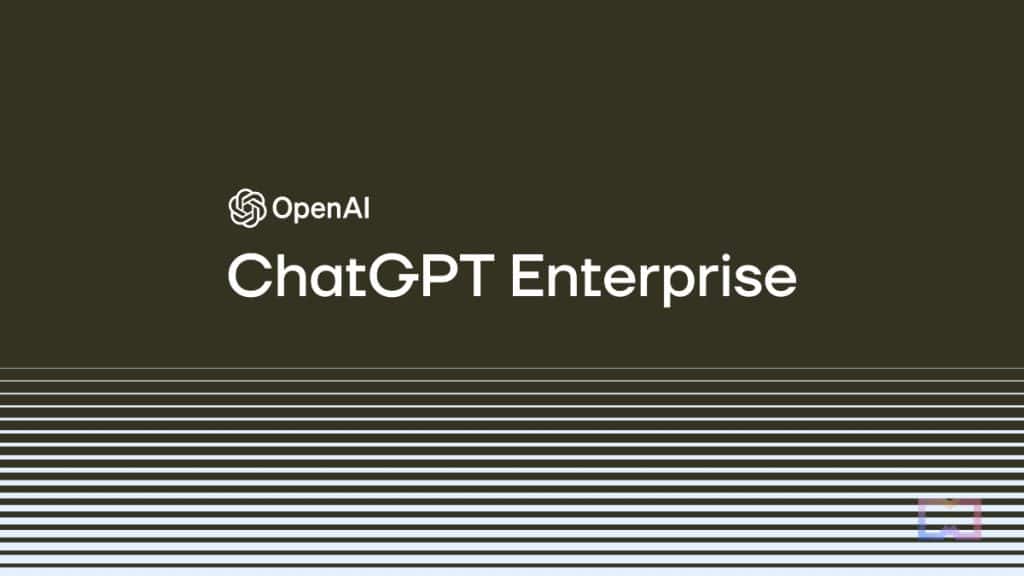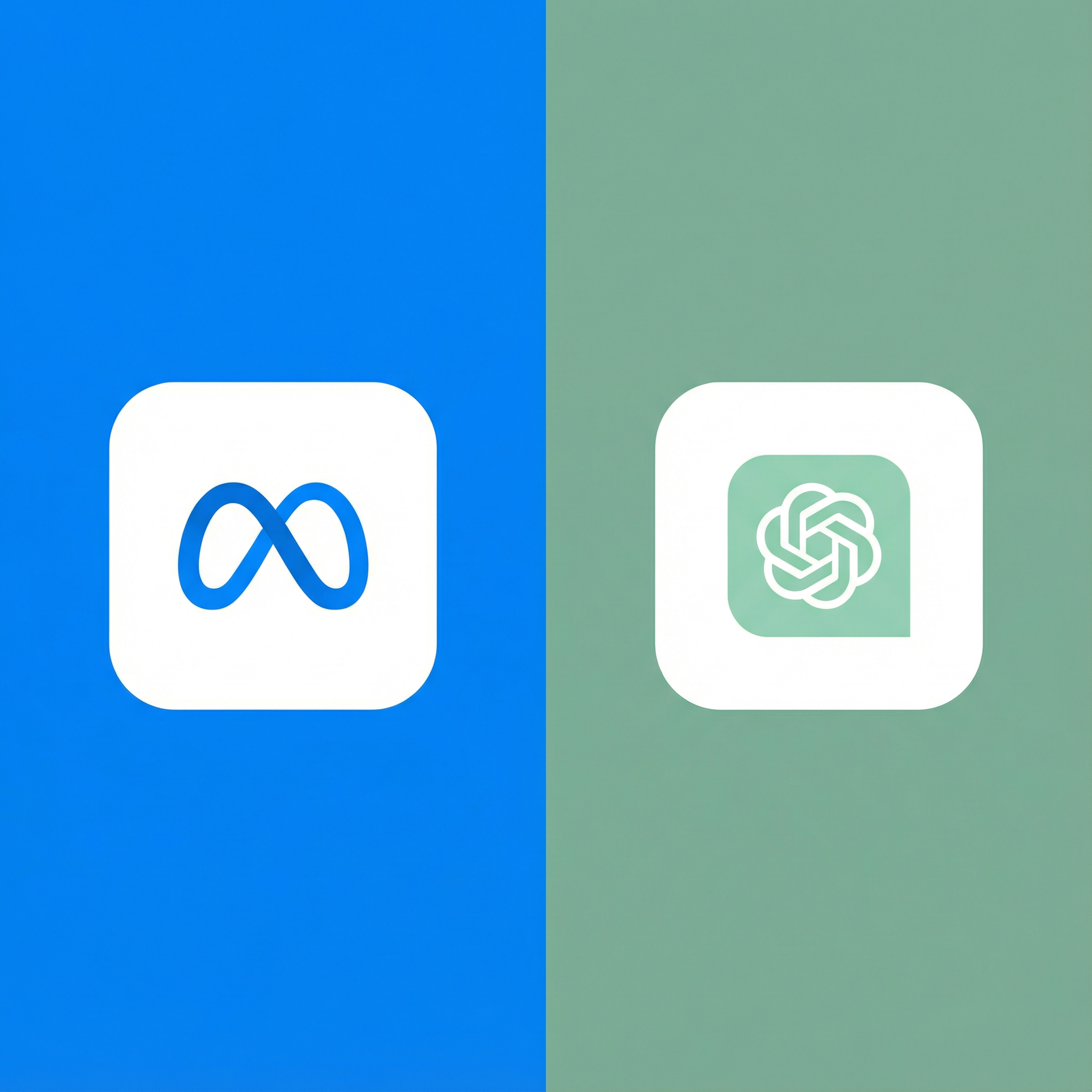Imagine a sales team that works 24/7, personalizes every interaction, and optimizes itself as it goes — that’s sales funnel automation. In this article, we'll explore how to build a funnel that attracts, engages, and converts leads with as little hassle as possible. (Hint: We’ll use AI.)
We'll cover:
- What an automated sales funnel is
- Steps to create an AI-powered funnel
- Key tools for AI sales funnel automation
- Tips for optimizing your AI-driven funnel
- Benefits of AI for sales funnel automation
What is an automated sales funnel?
An automated sales funnel is a structured process designed to guide potential customers toward a purchase decision. The twist is you’re using technology to automate steps and personal interactions.
Sales funnels typically follow tried-and-true customer journeys such as the AIDA model.
Here’s a general format your sales funnel can follow:
- Awareness: The "hello" stage is where potential customers discover your brand through content, ads, or social media. Focus on educating them and positioning yourself as a trusted resource.
- Interest: Prospects are curious and start engaging with your brand by visiting your website, downloading resources, or interacting on social media.
Nurture them by offering detailed information and value. - Desire: Potential customers begin comparing options and see the value in your solution. Highlight your unique selling points and expertise, and build urgency to stand out.
- Action: The "buy now" moment when prospects become customers. Make purchasing easy with clear calls to action, a smooth checkout, and flexible payment options.
Why AI changes the sales funnel automation game
AI is the secret sauce (well, not so secret anymore) that takes sales funnel automation to the next level. It's not just about automating tasks; it's about making those tasks more effective and tailor-made to your target audience.
AI can analyze vast amounts of data to understand customer behavior, predict their needs, and tailor interactions in real time.
Imagine sending the right message to the right person at the right time without lifting a finger. That's the power of AI in sales funnel automation.
It's like having your very own HAL 9000 (minus the murderous intent) on your team, anticipating customer needs, and guiding them through the funnel with as little friction as possible.
How does AI do this?
- Lead generation, enrichment, scoring, and more: AI algorithms can handle all of those time-consuming tasks like finding leads, researching them, and analyzing prospect data to identify those most likely to convert.
This saves time and effort, allowing you to focus all of your efforts on the hottest leads. - Laser-focused outreach: AI tailors content and offers based on individual preferences and behaviors. This tailored approach can increase engagement and conversion rates, whether that’s over email, social media, or wherever your customers are.
- Chatbots: AI-powered chatbots provide instant support and answer questions, guiding prospects through the funnel even outside business hours.
It’s worth noting these are just a few examples of how AI can play a key role in an automated sales funnel.
9 steps for creating a sales funnel with AI
Building an automated sales funnel is like assembling a well-oiled machine. Each part plays a crucial role in attracting, engaging, and converting leads. But what if you could build a smarter machine, one that can quickly adapt?
That's where AI comes in.
Let's explore how to make a funnel with AI, step by step:
Step 1: Automate audience research with AI
AI-powered tools can streamline audience research by collecting and analyzing data automatically. You can say so long to manual surveys and hello to AI-driven insights.
Example: Instead of spending hours sifting through customer data, use an AI tool to analyze demographics, behaviors, and preferences. This information can help you identify your ideal customer profile and tailor your messaging accordingly.
Step 2: Generate automated lead magnets with AI
AI helps you quickly create personalized lead magnets, such as downloadable content, quizzes, or email templates, that adapt to customer preferences. It's like having a content creation wiz on your team.
Example: Imagine a prospect visits your website. AI can analyze their behavior and automatically offer relevant content to them specifically, such as a personalized ebook or a “just for you” discount code.
Step 3: Attract traffic with AI-driven campaigns
Automate traffic generation with AI tools that manage ad targeting and spending in real time. This means your ads will reach the right people at the right time, boosting your return on investment.
Example: Instead of manually adjusting your ad campaigns, AI can analyze performance data and automatically optimize your bids, targeting, and even content.
Step 4: Engage and entice leads with AI-powered chatbots
Set up conversational AI bots to engage website visitors and collect their information in just minutes. These chatbots work 24/7 as a sales assistant and never doze off.
Example: Imagine a prospect landing on your website. An AI chatbot from Lindy can greet them, answer their questions, and even qualify them as a lead before handing them off to a human salesperson.
Step 5: Convert prospects with AI insights
Automate the decision-making process by using AI to recommend the right product, service, or action for each lead.
Example: AI can analyze a prospect's purchase history, browsing behavior, and preferences to recommend the exact product and service they need. This personalized approach can greatly raise conversion rates.
Step 6: Segment and target your audience automatically
AI tools automatically group leads based on behavior, demographics, and buying intent for precise targeting. You can rest easy knowing messages will always reach the right audience at the right time.
Example: Let's say you're running an online clothing store. AI can analyze customer data to segment your audience into different groups, such as "fashionistas," "budget shoppers," or "new parents."
You can then send targeted email campaigns with relevant promotions and product recommendations for each group. For example, fashionistas might get early access to new arrivals, while budget shoppers might receive alerts about sales and discounts.
Step 7: Nurture leads with automated follow-ups, email sequences, and even upsells
The great thing about AI is you can set up AI-powered email automation workflows that adjust content and timing based on user actions.
Example: Imagine a lead downloads a whitepaper on "How to Choose the Right CRM." A Lindy-agent can trigger an email sequence that provides further information about CRM solutions, including case studies, comparison charts, and invitations to webinars.
Based on the lead's interaction with these emails (opens, clicks, downloads), AI can adjust the timing and content of future messages, guaranteeing they receive the most relevant information at each stage of their journey.
Step 8: Re-engage and retarget leads automatically
Automate retargeting campaigns using AI to deliver personalized ads to leads who haven't converted yet. You want to give those still-on-the-fence leads a gentle nudge in the right direction.
Example: AI can track leads who have visited your website or interacted with your ads but haven't made a purchase. It can then create targeted ads that remind them of your products or services, increasing the chances of a conversion.
Step 9: Track and optimize the automated sales funnel with AI analytics
AI tools and their integrations with your sales tools provide continuous performance tracking, finding weak points in your funnel for automatic optimization. Think of it like having a personal analyst who constantly monitors your funnel and suggests improvements based on cold, hard data instead of hunches.
Example: Most AI tools can track key metrics like conversion rates, click-through rates, and customer lifetime value. They can then identify areas for improvement and suggest changes to your funnel, such as changing your landing pages or tweaking your messaging slightly.
Bonus step: Scale effortlessly with AI-powered automation
Expand your funnel's reach automatically with multilingual content and AI-driven tools for global audiences. You’re basically getting a universal translator and a global marketing team all rolled into one.
Example: AI can translate your website and marketing materials into multiple languages, helping you reach a wider audience. It can also help you tailor your messaging to different cultural preferences, helping you make sure your campaigns sound natural to specific countries and cultures.
Which tools are best for AI sales funnel automation?
Here's a breakdown of some key players in the AI sales funnel automation game:
AI products for lead generation
- Lindy: This powerful AI platform helps businesses automate their sales funnels with features like intelligent lead capture, personalized messaging, and automated workflows. Lindy can even spawn multiple "Lindies" to tackle different tasks within your funnel, like a team of AI agents working together.
- HubSpot: This marketing automation giant offers a suite of AI-powered tools for lead generation, including content optimization, lead scoring, and predictive analytics.
- Semrush: Known for its SEO and competitor analysis capabilities, Semrush also offers AI-powered tools for content creation, social media management, and paid advertising.
AI products for engagement
- Drift (now part of Salesloft): This conversational marketing tool uses AI-powered chatbots to engage website visitors, qualify leads, and book meetings.
- ChatGPT-powered tools: You can also leverage the power of OpenAI's language model. These tools can generate personalized responses, answer questions, and even create content, boosting customer interactions across various touchpoints.
AI for email workflows
- Encharge: This marketing automation platform offers AI-powered features for email marketing, including personalized content recommendations, automated email sequences, and behavioral triggers.
- ActiveCampaign: This comprehensive platform can handle most email marketing tasks. It offers AI-powered features for segmentation, personalization, and deliverability, ensuring that your emails reach the right people at the right time.
AI products for analytics
- Google Analytics 4: This latest version of Google Analytics uses machine learning to provide deeper insights into customer behavior, predict future actions, and offer recommendations for improvement.
- Hotjar: This behavior analytics tool uses heatmaps, recordings, and surveys to understand how visitors interact with your website, identify pain points, and optimize the user experience.
Tips for optimizing any AI-driven funnel
Even the most well-designed automated sales funnel can benefit from a little fine-tuning. Here are some tips to help you get the most out of your AI-driven funnel:
- Keep your eyes on the prize: Check performance regularly and use AI to track key metrics like conversion rates and drop-offs in real time. This will help you identify bottlenecks or areas for improvement in your funnel before they become a problem.
- A/B test your way to success: Use A/B testing to refine your funnel. Test different headlines, CTAs, and offers using AI-powered tools to determine what resonates best with your audience.
- Scale your funnel, not your workload: AI can help you expand and train distributed teams, guaranteeing everyone is on the same page and working towards the same goals.
- Personalize every stage of the funnel: AI can help you personalize the customer journey at every touchpoint, from the initial welcome message to the final purchase confirmation.
- Stay agile and quick on your feet: Use AI to monitor market trends and customer behavior, allowing you to adapt your funnel and messaging as needed.
- Don't forget the human touch: We love how AI can automate many tasks, but it's important to always have a fellow human in the loop and overlooking the funnel. Use AI to support your team, not replace it.
- Cleanse your data regularly: The accuracy of your AI-powered funnel is only as good as the quality of your data.
Make sure to cleanse your data regularly to remove any duplicates, errors, or outdated info. You can even build an AI agent to do this for you. - Integrate with other tools: Your AI-powered funnel should play well with your other marketing and sales tools, such as your CRM, email marketing platform, and analytics dashboard. Make sure they are compatible.
Common challenges and how AI solves them
Let’s face it — building and managing a sales funnel can be like navigating a maze blindfolded. Fortunately, AI can be the companion dog that leads you to the exit!
Let's take a look at some common challenges and how AI can help you overcome them:
- Lead qualification without the hassle: Identifying qualified leads can be a long and arduous process — plus, the fact they’re qualified doesn’t mean they will 100% convert. AI algorithms can analyze lead data and predict their likelihood of converting for you.
- Personalization at scale: It's impossible to handcraft messages for every single prospect. AI can personalize content and offers based on their individual preferences and behaviors, ensuring each lead feels valued.
- Timely follow-ups: Remembering to follow up with every lead at the right time can be a Herculean task without the right tools. AI can automate follow-up messages, making sure no opportunity slips through the cracks.
- Customer churn no more: There’s no sugarcoating it — losing customers is a pain as you’re watching your hard-earned profits vanish. AI can pinpoint at-risk customers before they actually leave and trigger retention campaigns to keep them engaged.
- Data overload woes begone: Drowning in data but thirsting for insights? We’ve all been there. AI can analyze vast amounts of data, recognize patterns, and provide insights that drive action to optimize your funnel.
- Keeping up with the changes: Market trends and customer behaviors are constantly evolving — sometimes a bit too fast. Fortunately, AI can help you adapt by analyzing real-time data and adjusting your stats accordingly.
Key benefits of using AI for sales funnel automation
Less time spent on tasks and much less manual effort
Imagine this: You're sipping your morning coffee while AI handles the tedious, repetitive tasks that used to consume your day. AI can automate tasks like lead scoring and follow-ups, freeing you to focus on what matters most: closing deals and building relationships.
For example, instead of manually sifting through leads, AI algorithms analyze prospect data, spotting those most likely to convert. This means your sales team can prioritize their efforts more intelligently, contacting hot leads first and avoiding wasted time on those who aren't a good fit.
More sales and conversions
AI isn't just a time-saver; it has the potential to become a sales powerhouse. By analyzing customer data, AI can customize messages and offers, boosting engagement and conversion rates.
Imagine a prospect browsing your website. AI can track their behavior, pinpoint their interests, and then display targeted ads or send personalized emails with relevant offers.
This level of hyper-personalization creates a more engaging experience, inching you ever closer to closing that slippery prospect you’ve been chasing for weeks.
AI can scale alongside your business
As your business expands, your sales funnel needs to keep pace. AI-powered tools can handle larger lead volumes and even help you expand into new markets, all without breaking a sweat (or the piggy bank).
Let's say you launch a new product or service. AI can analyze market data, find potential customers, and even create targeted campaigns to reach them. This way, you can scale your efforts fast, without the need for a massive sales team.
Gain better, more actionable, real-time insights
AI can provide key data and insights, helping you better understand your customers and tweak your sales funnel for peak performance.
AI can track customer interactions across all touchpoints, providing a holistic view of their journey. This data can then be used to identify bottlenecks in your funnel, optimize messaging, and improve the overall customer experience.
Frequently asked questions
What is an automated sales funnel?
An automated sales funnel is a structured system that guides leads through the buyer journey using automation tools. It reduces manual tasks and optimizes each step, from awareness to conversion.How does AI improve sales funnel automation?
AI enhances sales funnels by analyzing data, predicting customer behavior, personalizing content, and automating follow-ups. It helps businesses engage leads more effectively and convert them faster.What are the benefits of using AI in sales funnels?
Benefits include increased efficiency, higher conversion rates, personalized customer journeys, real-time optimization, and the ability to scale without growing your team.What tools can I use for AI-powered sales funnel automation?
Some top tools include Lindy, HubSpot, Semrush, Drift, ChatGPT-powered tools, Encharge, ActiveCampaign, Google Analytics 4, and Hotjar.Is a sales funnel the same as a CRM?
No. A sales funnel represents the stages a customer goes through before buying, while a CRM is software for managing customer relationships and tracking interactions.What is the difference between a click funnel and an automated sales funnel?
A click funnel typically refers to a simplified, landing-page-based funnel used to drive quick conversions. An automated sales funnel is a broader system with multi-channel engagement, personalization, and automation.Related Articles & Suggested Reading
